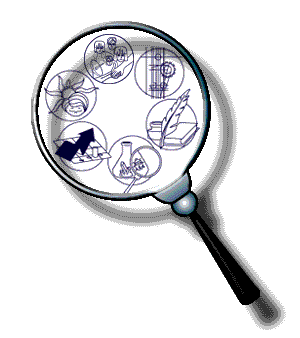
 |
3 definitions found
From WordNet (r) 2.0 [wn]:
Quine
n : United States philosopher and logician who championed an
empirical view of knowledge that depended on language
(1908-2001) [syn: {W. V. Quine}, {Willard Van Orman Quine}]
From Jargon File (4.3.1, 29 Jun 2001) [jargon]:
quine /kwi:n/ n. [from the name of the logician Willard van Orman
Quine, via Douglas Hofstadter] A program that generates a copy of its
own source text as its complete output. Devising the shortest possible
quine in some given programming language is a common hackish amusement.
(We ignore some variants of BASIC in which a program consisting of a
single empty string literal reproduces itself trivially.) Here is one
classic quine:
((lambda (x)
(list x (list (quote quote) x)))
(quote
(lambda (x)
(list x (list (quote quote) x)))))
This one works in LISP or Scheme. It's relatively easy to write quines
in other languages such as Postscript which readily handle programs as
data; much harder (and thus more challenging!) in languages like C which
do not. Here is a classic C quine for ASCII machines:
char*f="char*f=%c%s%c;main()
{printf(f,34,f,34,10);}%c";
main(){printf(f,34,f,34,10);}
For excruciatingly exact quinishness, remove the interior line breaks.
Here is another elegant quine in ANSI C:
#define q(k)main(){return!puts(#k"\nq("#k")");}
q(#define q(k)main(){return!puts(#k"\nq("#k")");})
Some infamous {Obfuscated C Contest} entries have been quines that
reproduced in exotic ways. There is an amusing Quine Home Page
(http://www.nyx.org/~gthompso/quine.htm).
From The Free On-line Dictionary of Computing (27 SEP 03) [foldoc]:
quine
/kwi:n/ (After the logician Willard V. Quine,
via Douglas Hofstadter) A program that generates a copy of its
own source text as its complete output. Devising the shortest
possible quine in some given programming language is a common
hackish amusement.
In most interpreted languages, any constant, e.g. 42, is a
quine because it "evaluates to itself". In certain {Lisp}
dialects (e.g. {Emacs Lisp}), the symbols "nil" and "t" are
"self-quoting", i.e. they are both a symbol and also the value
of that symbol. In some dialects, the function-forming
function symbol, "lambda" is self-quoting so that, when
applied to some arguments, it returns itself applied to those
arguments. Here is a quine in {Lisp} using this idea:
((lambda (x) (list x x)) (lambda (x) (list x x)))
Compare this to the {lambda expression}:
(\ x . x x) (\ x . x x)
which reproduces itself after one step of {beta reduction}.
This is simply the result of applying the {combinator} {fix}
to the {identity function}. In fact any quine can be
considered as a {fixed point} of the language's evaluation
mechanism.
We can write this in {Lisp}:
((lambda (x) (funcall x x)) (lambda (x) (funcall x x)))
where "funcall" applies its first argument to the rest of its
arguments, but evaluation of this expression will never
terminate so it cannot be called a quine.
Here is a more complex version of the above Lisp quine, which
will work in Scheme and other Lisps where "lambda" is not
self-quoting:
((lambda (x)
(list x (list (quote quote) x)))
(quote
(lambda (x)
(list x (list (quote quote) x)))))
It's relatively easy to write quines in other languages such
as {PostScript} which readily handle programs as data; much
harder (and thus more challenging!) in languages like {C}
which do not. Here is a classic {C} quine for {ASCII}
machines:
char*f="char*f=%c%s%c;main() {printf(f,34,f,34,10);}%c";
main(){printf(f,34,f,34,10);}
For excruciatingly exact quinishness, remove the interior line
break. Some infamous {Obfuscated C Contest} entries have been
quines that reproduced in exotic ways.
{Ken Thompson}'s {back door} involved an interesting variant
of a quine - a compiler which reproduced part of itself when
compiling (a version of) itself.
[{Jargon File}]
(1995-04-25)
Powered by Blog Dictionary [BlogDict]
Kindly supported by
Vaffle Invitation Code
Get a Freelance Job - Outsource Your Projects | Threadless Coupon
All rights
reserved. (2008-2025)